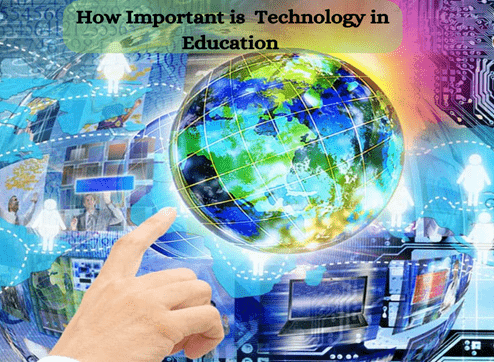Do you want to know how important technology is in education? If yes, read this article very carefully. We will let you know about education and technology.

The use of technology in education is one of the many spheres of modern life that have been altered by this development. Or is it? In many respects, the educational system has not changed much over the past several decades. A university lecture in medieval Italy is depicted in an image from the 14th century created by Laurentius de Voltolina. The setting is instantly recognized due to its striking similarities with the present day.
Increased student engagement, assistance for instructors in developing more successful lesson plans, and the facilitation of more personalized learning can all result from the productive use of digital learning tools in the classroom. Additionally, it assists pupils in developing key abilities for the 21st century.
Not only can the use of virtual classrooms, video, augmented reality (AR), robots, and other technological tools make the class more engaging, but they can also create learning environments that are more welcoming to students of all backgrounds, encourage collaboration and curiosity, and give educators the ability to collect data on the academic performance of their pupils.
However, it is essential to remember that technology is merely a tool that can be utilized in the classroom and is not an aim in and of itself. What educators do with technology in the classroom and how they use it to meet their students’ needs is where educational technology’s real potential lies.
Benefits Of Educational Technology
The following is a list of the many benefits that can result from utilizing various forms of educational technology:
1. Offers A Wider Choice Of Materials
It provides a greater selection of materials, all of which may be accessed without much difficulty.
The broad assortment of educational technology that is currently available provides students with a wide variety of possibilities, from which they can select the ones that are most suitable to meet their requirements for learning. Because of this, students are better able to cultivate the information and abilities necessary to become successful professionals in their chosen subject.
2. Provides A Fun And Engaging Learning Experience
Students benefit from an educational experience that is both enjoyable and interesting, thanks to this.
Learners in today’s world are not only expected to learn but also to have fun while they are learning. Students have the opportunity to have fun while they are learning, which will help them maintain their motivation and excitement about their studies. Educational technology offers this opportunity.
3. Allows Learners To Access The Internet From Anywhere
It is becoming increasingly difficult to find people who do not use the internet regularly because it has become such an ingrained component of our lives. For students to complete their homework and research without having to travel all over the place or wait until a specific time when they can do so, they must have constant and unrestricted access to the internet from any location. This is especially true in the modern world.
4. Helps Learners Learn New Skills
Learners can learn new skills and acquire new knowledge with its assistance.
Learners should be able to take pleasure in two very important areas of life: acquiring new knowledge and developing new abilities. Learners can gain these abilities and also enhance their knowledge by using numerous programs that are available online, all of which can be facilitated through the utilization of educational technology.
5. Improve Learners’ Communication Skills
Learners who can communicate better through technology methods will also perform better in academic and job settings. This is because communication skills are highly crucial when you want to get your point across in an efficient manner.
Bottom Line
Teachers continually look for new methods to tailor their students’ educational experiences. Access to real-time student data, longitudinal information, content, apps, and more may all be made available to students through technology, which can help them achieve new levels of success. New learning and teaching paradigms can be introduced into classrooms using technology, which can assist educators in developing blended learning environments and utilizing digital tools for formative and summative evaluations.
